“Tripwire” is one of those jargon terms that make even our most hardcore marketing friends cringe, but there’s no denying they’re a powerful tool for creating sales funnels that convert.
If you’re interested in building a list filled with eager-to-buy customers rather than just freebie-collecting subscribers, and if you’re looking for a way to add passive revenue streams to your business, stick around as we walk through how to use tripwires to do just that.
But first, if you’re wondering, “What is a tripwire?” let’s start by breaking down some basic definitions in real-human lingo…
What is a Tripwire Funnel?
A tripwire is an irresistible low-cost offer (usually a digital product priced at $49 or less) that’s designed to turn a member of your audience into a customer quickly.
Irresistible because the perceived value is much greater than the price and it solves a painful problem for your customer.
At ConversionMinded, we stick to a rule of “$49 or less” but often our tripwires are priced much lower in the $7-$22 range. For our B2B audience, this fits squarely into the “impulse purchase” price range.
If the price is less than the value of having that problem solved, there’s very little anxiety around their decision to buy without doing a ton of research and taking time to consider, so they’re more likely to take action the moment they see the offer.
Say you offer a coaching package or digital course priced at $2,000. That’s a pretty big financial commitment (especially for people who don’t know what it’s like to be your customer yet). Your customer will need to compare all their options, do a bit of digging to figure out exactly what to expect, and psychologically process all of their objections before feeling confident about spending that money.
A product that’s priced very low is a less-risky first step. So maybe for you, that first offer comes in the form of a $25 workbook that helps your target audience inch closer toward their goals as they relate to your coaching program.
Once your customer “converts” (makes that initial purchase), you can continue to nurture the relationship with them through automated email sequences, webinars, and other marketing tactics to guide them toward your premium offers. But now, after getting a sample of the value they can expect when they give you money, they know they can trust you if they make another purchase.
A tripwire is the first step in a larger funnel that guides customers toward an additional or larger purchase. It’s about getting a cold audience to take a leap of faith and to put it crudely, “pull out their wallets.”
Because the decision to trust you with their money has already been made, you can also offer them something else that will help them solve this problem even more during the checkout process. Your second offer might be an “upsell” to a complementary product or an “upgrade” to a larger package.
Or, if you’re selling services or high-ticket programs and courses, your “pitch” might happen after you nurture the relationship with emails and other content so they can get to know you and your approach a little better first, but you want to do this immediately by automating your follow up emails because this is when they’re going to be most engaged and will be actively looking for solutions.
Think of it like “stacking” one offer on top of another in a way that helps your customer solve a specific problem or achieve a desired outcome.
Either way, if your tripwire is hyper-relevant to your other offerings, it’s a very effective way to attract the right people into those funnels.
Why You Need A Tripwire (No Matter What You Sell)
When someone makes a purchase there is an exchange of value (their money in exchange for your solution) and that changes the relationship. That psychological shift is the key to understanding the purpose of a tripwire.
Once someone trusts you with their cold, hard cash and you deliver value in return, they’re no longer a total stranger, they’re a satisfied customer.
And a satisfied customer is exponentially more likely to take you up on another offer (even a much more expensive offer!) than someone who has never made a purchase before.
In other words, a tripwire fast-tracks the customer journey.
For that reason, it’s a good idea to use a tripwire to introduce your brand to new customers whether you’re selling services, courses, digital products, or even physical goods online.
The Role A Tripwire Plays in Your Larger Marketing Strategy
Let’s talk about the “value ladder” — more marketing lingo, I know, but this is a goodie because it’s a visual metaphor for exactly what you’re aiming for, so it’ll help you remember it and put it into practice.
A value ladder is simply a series of offers that guides people from complete internet strangers (“who are you again?”) to loyal customers and raving fans.
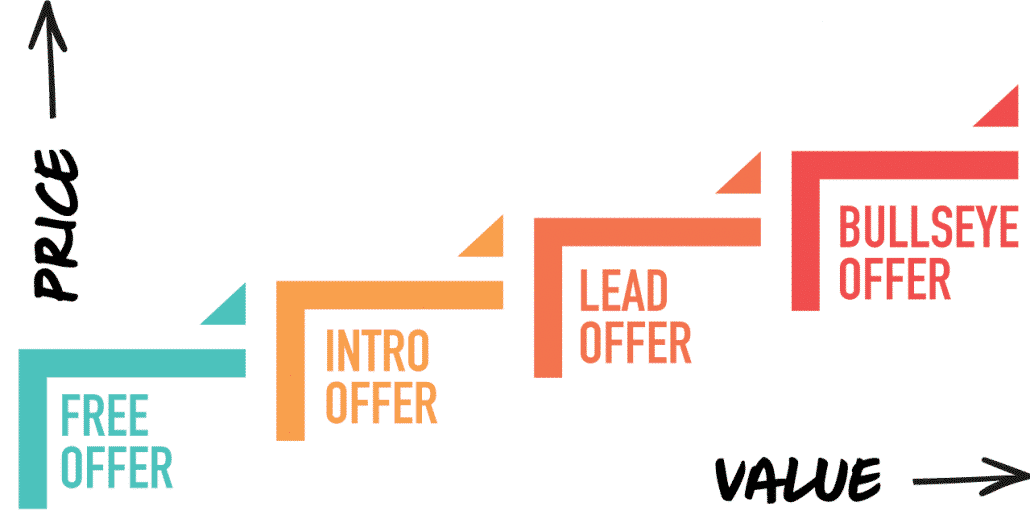
The idea is that each of your offers will increase in price and value so you can meet your audience where they are in their decision-making process (to hire you or make a purchase).
As we’ve covered, when they first encounter you, it’s highly unlikely they’re going to be ready to commit to a high-ticket purchase. They’re just starting to become aware of the problem they’re experiencing and options to solve it.
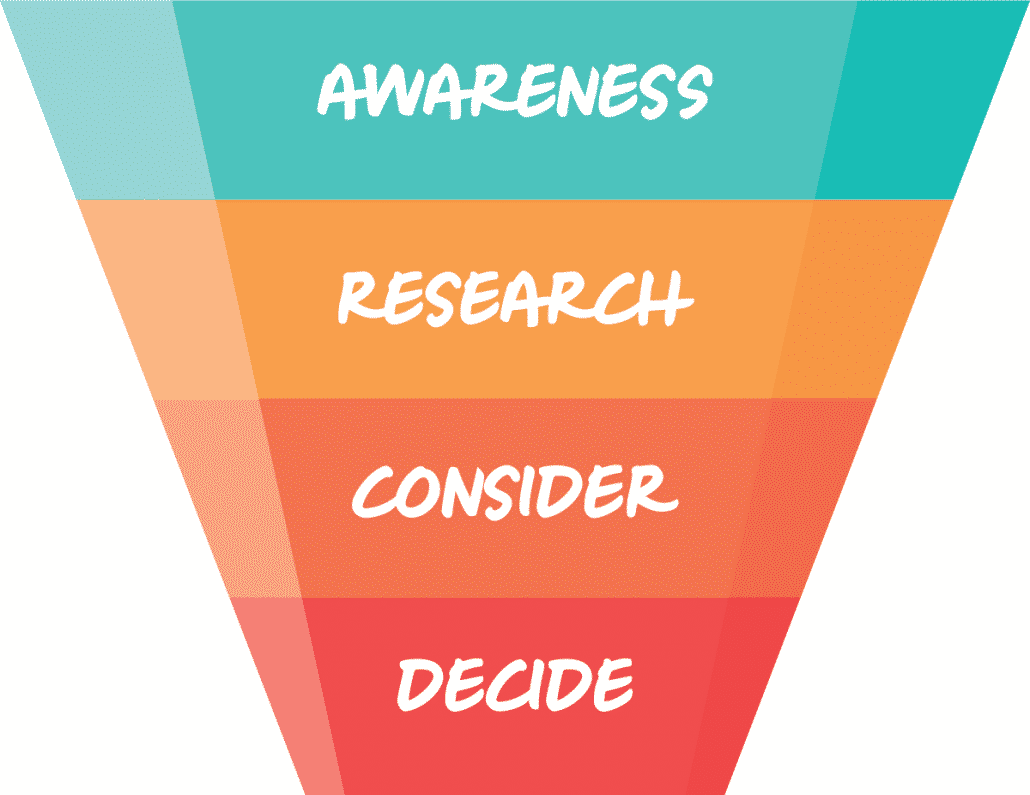
At the awareness stage, they’re probably only willing to invest a bit of their time to read a blog post. Then, if the blog post was valuable to them, they’ll likely be willing to give you their email in exchange for a free offer. And deeper into your marketing funnel they go…
A Tripwire is a Bridge Between Your Free Content and Your Marketing Emails
Now, what most people do at this point (after your audience subscribes to your list) is to start sending out newsletters to “stay in touch” hoping someday, eventually, their subscribers will be ready to take the next steps. And that’s fine, we do that too, but we all know the chances are very likely that this person will be one of the 75-80% who, on average, doesn’t even open your emails.
Enter the tripwire.
By making an irresistible offer right away, a percentage of those people who sign up for your list will become a customer immediately. And that’s magical because a customer is something entirely different than a random person who doesn’t know or trust you who just signed up for your list to grab a freebie.
Now, before you start getting dollar signs in your eyes…
A Tripwire Builds Trust & Brand-Loyal Customers
Yes, you can make money selling tripwires. (Some people make a lot.) But always remember that the most valuable role your tripwire plays is to earn trust. So come at it from that angle and make that your primary goal. You might even think of the revenue it generates as the cherry on top.
Always remember “if they don’t trust you, they ain’t buyin'” so establishing trust and credibility is crucial for larger ticket sales, repeat business, and customer loyalty.
If you offer some flimsy cheapo thing that doesn’t have a whole lot of value, they might not be too upset if they didn’t pay a lot for it. But be careful here because if the value doesn’t exceed the price they paid for it, you’ve blown your chance to retain a customer for life and maximize revenue in the long run.
Because it’s exponentially cheaper to keep a customer you have than acquire a new one, tripwires are a great way to build a list of buyers. Once you’ve established trust with a customer, they’re exponentially more likely to buy something else (even a high ticket offer).
So you want to be thinking in terms of your lifetime value of a customer, not a one-off low-ticket sale.
In the following value ladder illustration, I’m calling the tripwire an “intro offer.”
This offer represents the first time you’re putting a price tag on the value you provide –it’s higher in value than your free offers (blog posts, freebies, webinars, etc.) but less than your high ticket programs, products, courses, or 1-1 services.
It needs to be a digital product of some kind (not a discounted consultation or service) so you’re able to scale and make the best use of your time. That is, it needs to be a 100% automated and passive thing working for you in the background.
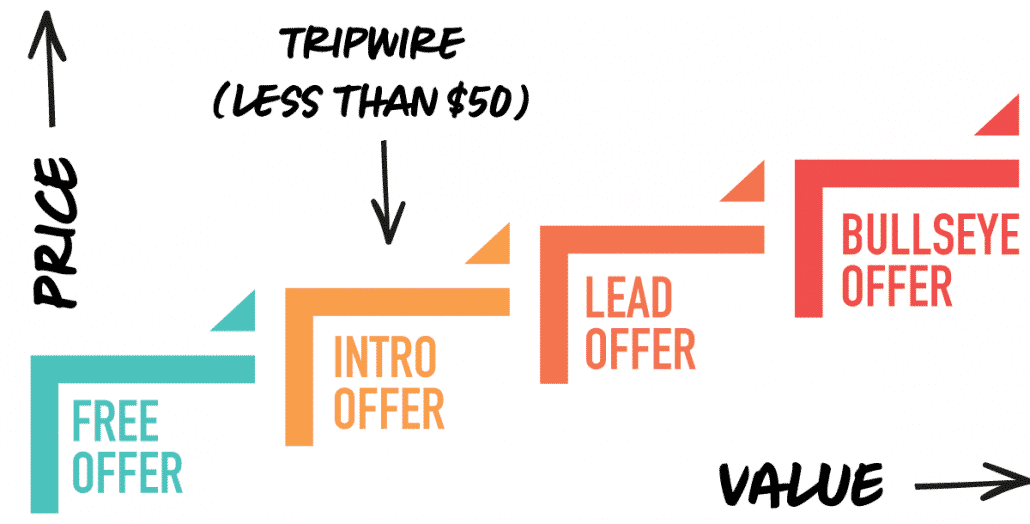
Want some help launching your first (or next) digital product? Grab our Digital Product Launch Blueprint! ?
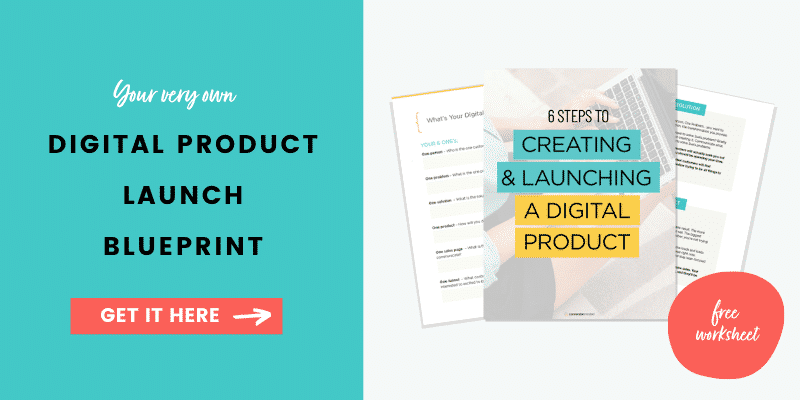
The Benefits of Using A Tripwire
Tripwires Help You Build A More Target Emal List
Because you’re taking a shortcut in the customer journey by turning them into a customer right away, that means you’re able to more easily build a list of customers rather than a list of anonymous strangers who are just there to consume your free content and peace out.
Tripwires Provide a Way for Hesitant Customers to Vet You Before Investing More Money
This is an unexpected surprise I learned about tripwires after implementing them to make a bit of extra passive income…
I figured people would buy them as part of the natural flow of a very simple marketing funnel: blog post > opt-in freebie > tripwire offer.
But what I didn’t expect was that people who were considering me for my higher-priced 1-1 services were purchasing my low-cost digital products as a way of sussing me out. My tripwires were intel for them!
I know that because time after time, I’d get on a sales call and the person on the other end would kick things off with, “So I read your ebook!”
Sometimes what they purchased had nothing to do with what they wanted to hire me for. They just wanted to know if they gave me money they’d get value in return.
I realized they had been eyeing the top rung of my value ladder (my premium services) and decided to skip back down to the low-priced offer as a way to overcome final objections and lingering doubts.
And that? Makes sense. Whatever works. 🙂
You Can Use Tripwires to Gauge Interest in Larger Offers You’re Thinking About Creating
You can get creative with tripwires and use them to validate other ideas you have for larger product or service offerings. That is, create the tripwire first and then create more offers for your funnel if it works out.
Say you have an idea to create a product about branding and you outline all the things people need help with when they’re doing their own branding project.
What you can do to “test the waters” of interest in your course or product is to create a smaller digital product that relates to it and solves a very narrow, specific problem.
To get ideas you’ll start by brainstorming all those problems…
“How do I come up with my brand name?”
“What colors should I use for my branding?”
“What fonts should I choose for my branding?”
“How do I create a logo?”
“Do I need a tagline? What even is a tagline?”
From this list, you might choose the problem of selecting great fonts to use in a branding project. Cool. But that’s still a pretty broad topic, right? That is, you don’t want to create a typography course, that would be solving the problem too far and you don’t want to get too carried away. ?
So think about…
How can you offer a quick win? What kind of tool or training could you create to help your audience quickly choose fonts for their branding project?
This is the exact process I went through when I came up with the idea for The Font Personality Swipe file, one of my very first tripwires. I included 75 Google Font combinations categorized by brand personality and I priced it at $7.
I just offered a quick win for one very specific problem. People struggling to choose brand fonts can use this swipe file to find options that will work for them.
I knew that if people gobbled that up? I could continue solving their problem further. That little $7 download sold really well so I invested a bit more time in creating a larger product – the Brand with Confidence Toolkit which, no surprise, also sold really well and continues to. Because the tripwire sold well I knew there was a pretty good chance solving that problem further would be a winner.
Tripwires can be a great way to understand your audience and what they need help with and they shouldn’t cost you a lot of time to put together.
Plus, even if a tripwire flops, chances are good you’re going to make some sales to offset the costs of creating it. You would be surprised how helpful even a $7 product can be for your bottom line when you give it enough time. (As my accountant mama used to say when I’d ask her for money, “It all adds up!”)
Tripwires Can Be Repurposed As Bonus Incentives For Larger Offerings
Once you’ve created a tripwire, if it naturally relates to another product or service you offer, you can easily throw it in as a bonus. People LOVE bonuses and it helps you to create the perception of higher value without lowering your prices when you offer something extra for a limited time.
Over time, you can even build up an inventory of low-cost digital products to use as tripwires and limited-time bonuses in email promotions to help you create a sense of urgency.
Tripwires Are The Easiest Way To Make Passive Income
And last but not least, one of the biggest benefits of adding a tripwire to your marketing mix is to make extra passive income.
If you’re considering creating a larger course and that’s new territory for you, I’d encourage you to try creating a tripwire funnel as a first step — they take much less time to create and test.
You’ll learn a LOT about how much time, money, and effort it takes to set up sales funnels and automate the sales process, and then you’ll be able to apply what you learn to a larger offering. (The higher the price, the more complicated the marketing will be but this is a great way to get started with the basics.)
While it’s possible to make oodles of money with low-cost digital products, “how much” largely depends on the size of your audience and how aggressively you promote them.
Be realistic because passive income is a long game, it takes time to gain momentum. But if you consider the money you make as a way to offset marketing costs and the time/expenses it takes to create them, you’ll be more likely to keep adding to your inventory of digital products.
If your tripwire converts really well you can lean into that and focus on getting more traffic to it, even running paid traffic (advertising), and adding more offers to your funnels (upsells, downsells, etc.).
When I was just starting out many years ago I had a relatively small audience and wasn’t getting rich selling tripwires, but every week I’d get a paycheck and it amounted to a few extra thousand bucks per year in additional revenue with virtually no overhead. It may not seem like a lot, but consider that even years later, those products still sell without any additional efforts and negligible overhead costs.

What Makes a Great Tripwire?
TLDR; it’s all about value, value, value.
At this point, I want to mention a common mistake people make based on my experience coaching clients through setting up their first funnel…
As we’ve established, a great tripwire is a low-cost offer ($49 or less) but that doesn’t mean it shouldn’t be incredibly valuable. In fact, it should provide much more value than the price you put on it and that can feel painful when you’re just getting started.
What a lot of beginners do is consider all those hours they spent creating their digital product and calculate the value of their time. That is, if they’re a freelancer charging $100 per hour and it took them 20 hours to create, they’re thinking that was a $2,000 opportunity cost (so, they’d better price it pretty high).
You might be tempted to think that a tripwire that’s priced at $10 means you’ll have to sell 200 before you “break even.”
But selling digital products is not the same as selling your time. It’s not an opportunity cost, it’s an investment, and the payoff won’t happen instantly like it does when you send an invoice for services.
And remember, your first goal isn’t to generate revenue, it’s to earn trust and to attract people who are good candidates for your other (higher priced) products and services. You can even think of creating a tripwire as a marketing investment.
A great tripwire helps your customer solve their problem a little bit of the way (toward your other solutions) and gives them a quick win. If must relate to your other paid offerings (see value ladder above) in order for it to be a win for you as well.
Quick example. My first digital product was an eBook/workbook written with my ideal client in mind. I priced it at $47 and made less than $1000 in sales the first year. Not awesome, right? ?
I had no idea what I was doing and no clue how to even get my product in front of the right people. But, I had created something I knew would be valuable to the people I wanted to work with 1-1. When I crunched the numbers I realized 10% of them went on to become a client and those clients paid me thousands of dollars for my services.
So think about…
- What problems do you solve? (With your 1-1 services or higher-ticket products/programs.)
- What problems do your customers have as they relate? (Brainstorm a big old list!)
- What’s the ultimate outcome or transformation they want? (Really take the time to get clear about the big picture.)
Then think about…
- How can you break this problem down and solve one specific aspect of it?
- How can you give them a “sample” of your larger offerings without giving away too much?
- What can you create that’ll be useful to them (for example save them time or money, or help them achieve an immediate goal)
- What do you need to include in your product to give them a standalone solution? (In other words, they win whether they make another purchase or not.)
The key to a great tripwire is that it solves a specific problem. Be ready to define exactly what that is and what outcome they can expect when they buy.
Note: don’t go wild and start solving all of the problems your dream customers have. Just make it hyper-relevant to your other products and services in your value ladder and aim to give them a quick win.
Examples of Tripwire Digital Products You Can Create
Since we’re talking digital products here, we’re talking about content and that can come either as…
- Written content
- Audio content
- Video content
- A combination of all three (like a small course)
Once you have an idea for what you can create, play to your strengths and choose the format that will be most useful to your audience.
- It might be an interactive .pdf workbook or an eBook or guide, a calendar, a swipe file, templates, a spreadsheet or a combination of digital documents
- An audio guide or an audio series is great if your audience includes people on-the-go – they can listen in their car, on their commute, while doing chores, or at the gym
- Maybe it’s a video masterclass or tutorials
- What about a bundle or toolkit that combines different options from the list above?
Brainstorm some initial ideas and then ask yourself:
- What is the outcome my customer will get when they’ve used this product?
- Are there any gaps that will prevent them from getting that outcome? (Fill those in!)
- What can I include that will make it even easier for them?
- How can I save them time in achieving this outcome?
- What would make this even more valuable to them?
PDF Workbooks, Swipe files, eBooks, and other Digital Documents
You don’t need special software or design skills to create a digital document. It can be as simple as hopping on Google Docs or Canva and creating a document as you do, then, save it as a .PDF, and voila!
But as a former professional designer, I know first-hand that good design can elevate the perception of value so my advice is to create a nice cover and mockup and make sure your documents are well-formatted. You might even find a freelance designer or virtual assistant with design skills to help if that’s not your cup of tea.
Or, check out our Make it Sell it Toolkit which we created for digital product creators for this very reason. We put together an epic collection of Canva templates for creating documents to sell (plus matching landing pages and sales pages for WordPress).
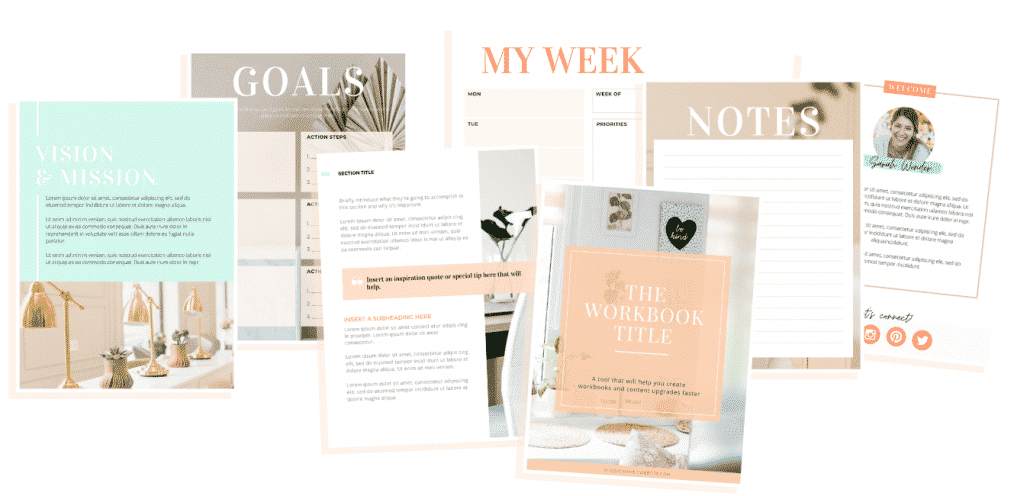
Audio Guides
Admittedly, I’m no audio expert so if you’re a podcaster or have experience with this, just fast forward, nothing to see here. ?
I keep it cheap and easy by using QuickTime (already installed on my computer) to record audio. I don’t have a fancy-pants microphone (yet) and I don’t think you need to to get started… but, you do want to make sure your audio is clear and free from background noise. Customers will forgive a lot if you’re working on a budget but not bad audio.
I either use earbuds that have a microphone built-in or a lavalier mic. If you’re “one of those people” and only top-shelf will do, a top tip I have for you is to look in the description box for your favorite YouTube podcaster, they usually link to the equipment they’re using.
For editing, check out Audacity.
To sell an audio file, you can use something simple like Gumroad. Just sign up for an account. You can use the free plan to start (they just take a bigger cut of any sales) and upgrade when you’ve got money coming in.
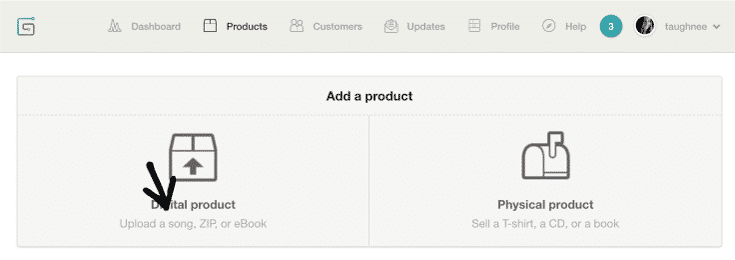
Video tutorials, workshops, masterclass, small drip course
If you can teach something that’s better presented in video format, you could create a video presentation or a series of smaller videos to be delivered as a “drip course” (for example one short lesson delivered each day for a fixed number of days).
Setting that up can be as simple as hosting your videos as “unlisted” on YouTube and then creating an automated series of emails that link to the videos with a tool like MailerLite or ConvertKit.
Both email tools make creating automated sequences easy but my preference is MailerLite if you’re just getting started with something like this because it’s free until you hit 1,000 subscribers.
The easiest way I know how to host and sell videos, though, is to set them up in a digital product hosting service like Podia. You simply upload the videos directly into the lesson and they handle all the hosting for you, you can even set it as a “drip” course.
It’s also extremely user-friendly for people who are consuming your content and works on all devices. If you have supplemental text, checklists, or workbooks, or documents, you can upload them as well. Easy-peasy.
Side note: I know there are lots of great membership sites and digital product e-commerce solutions out there that I’m not mentioning. I’ve done tons of research and have used lots of technologies for different projects. But, I use these in my own business and I’m a huge fan of choosing the easiest solutions to start — my feeling is, tech headaches and frustrations are not a good use of time until the revenue justifies it.
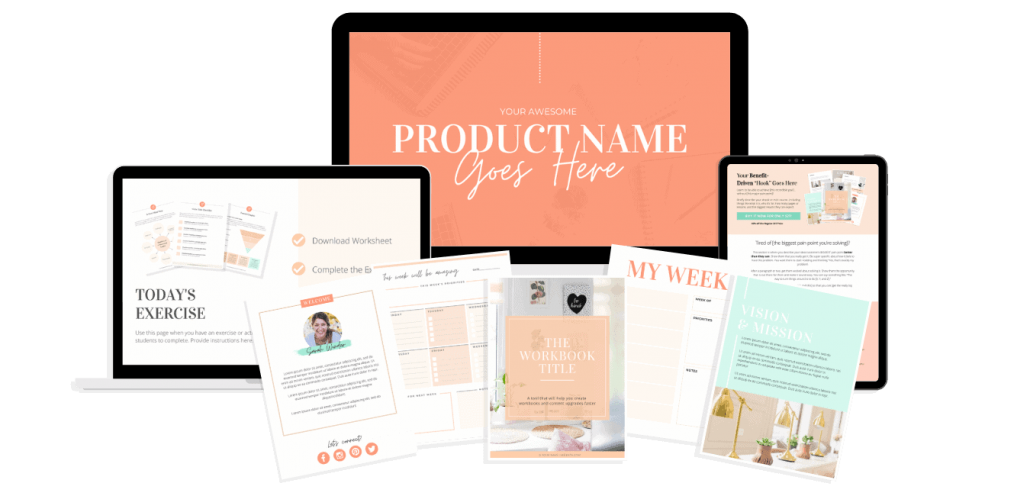
3 Simple Tripwire Marketing Funnels You Can Try
Once you’ve created your low-priced digital product, you can’t just stick it on a “products” page on your website and expect people to buy it. Some may, but most people will miss it. The idea is to present them with an offer they can’t resist at exactly the right moment.
Remember that your tripwire is the bridge between your free offers and your email marketing content.
Free content > Free opt-in incentive > Tripwire > Email marketing
Your tripwire sales page needs to be shown to them immediately when they sign up for your email list. That’s when they’re most engaged and actively looking for solutions. Presenting your tripwire offer can be done in one of two ways:
- It’s presented on the “thank you” page that you redirect people to after they opt-in to your email list
- And/or, it’s offered in your delivery welcome email
👉 Note: the easiest and most effective way to offer a free opt-in incentive from your blog is to create a Content Upgrade, so be sure to check out this post if you need help with that step. You can also create a landing page to direct traffic from social media and Pinterest. You can grab templates to help you set that up here.
There are lots of ways to go about setting up a tripwire funnel but here are just a few ideas for you. Just remember that the purpose of the tripwire is to create an offer that’s so attractive it’ll wow your audience so much they’ll want to buy it on impulse.
1. The One Time Offer Funnel
The “one-time offer” (or “OTO”) is a very common funnel used by bloggers and digital product creators. To set it up you’ll need:
- Relevant blog post(s) that relate to your tripwire product
- A content upgrade (a freebie + an opt-in form within your post)
- A landing page to redirect the user to after they fill out the form with a “one time offer” for a limited time
- A follow-up sequence of emails that guides them toward your next or more premium offer
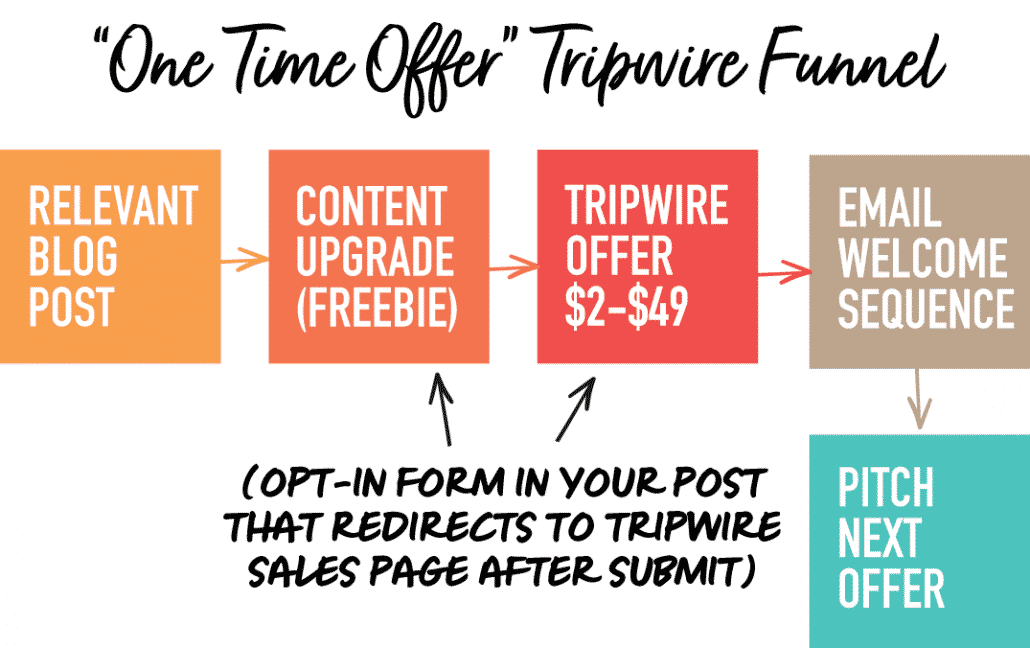
How this works is immediately after they sign up for your mailing list, you’ll send them to a “thank you” page. Most email service providers have this functionality (we use ThriveLeads to create our forms and redirects).
But instead of just a simple “thank you” message, you’ll also present a special offer… you might call it:
- An exclusive offer that’s not available anywhere else
- A one time offer that won’t be made again
- A limited time offer for new subscribers
To give you a visual, it looks something like this…
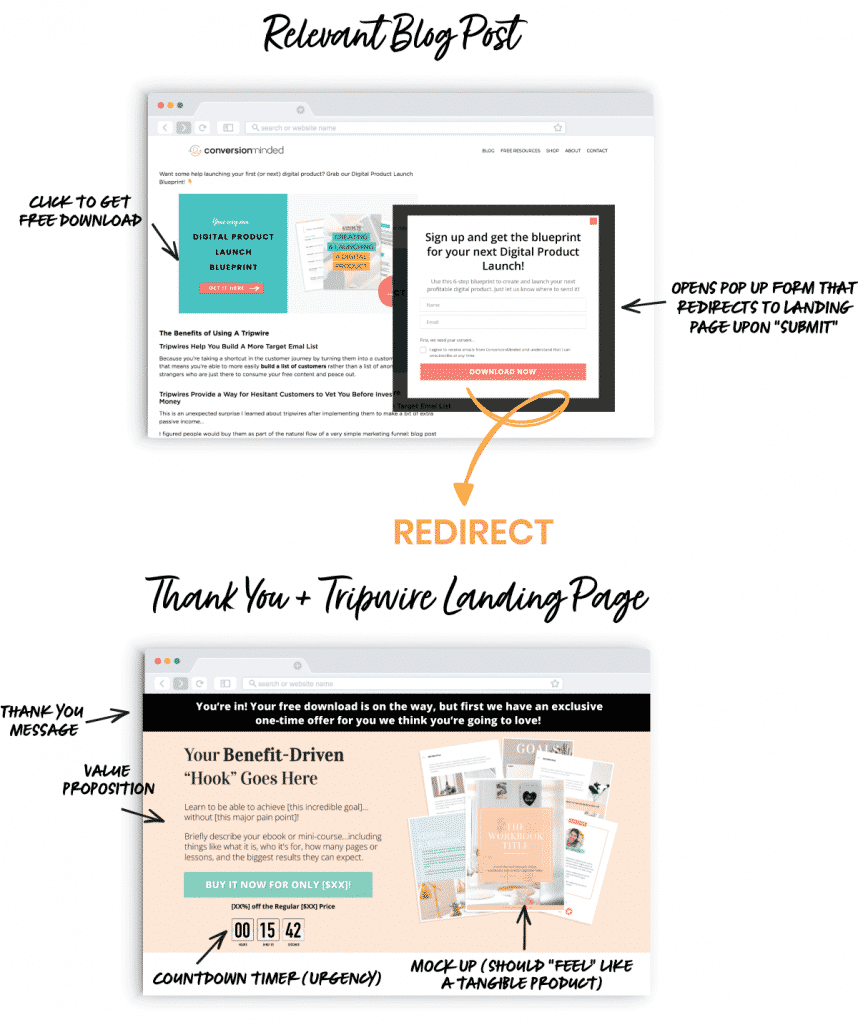
STEP 1: Create a landing page
A landing page is different from a normal web page because you’ll remove all distractions with the exception of your offer. That means it should have no header navigation, no footer, no links to other things, no “follow me on social media” — just the offer.
I recommend learning how to set up landing pages on your own domain because to me, committing to using a third-party landing page service (which are usually not cheap) is a monthly expense that’s not worth it when you’re just getting started.
The WordPress theme I prefer to use to create landing and sales pages is Divi – it’s as simple as choosing the “blank page” template. Then, I just use their visual drag-and-drop editor to set up the page.
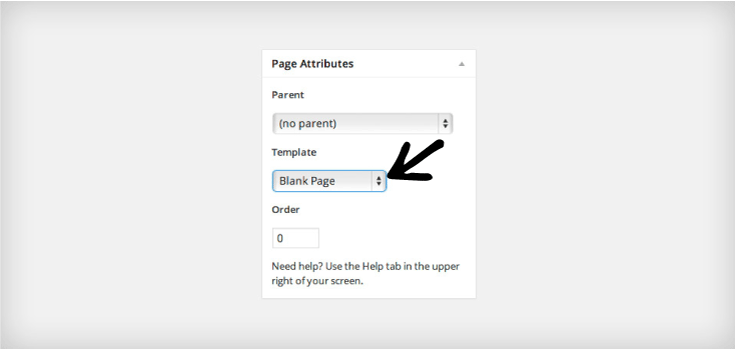
Visual builders like Elementor or Thrive Architect are also great tools that allow you to do basically the same thing.
(You can check out our toolkit that includes pre-designed sales pages and landing pages for all three builders with copy prompts and mockup templates to set these pages up quickly.)
STEP 2: Integrate a countdown timer
I know you’re probably thinking “Oh no, those cheesy things?” but without them, there’s no real urgency to take action. But here’s the thing… you mustn’t just put a countdown timer that doesn’t really expire the offer.
You need to use one that legitimately offers it for a limited time and if they don’t buy, the page should expire.
An affordable option I use and have been pretty happy with is Countdown Dynamite. It’s a simple plugin that integrates with WordPress and is easy as pie to set up. You just turn it “on” on any page where you want it to appear, tell it how long you want the timer to run (e.g. 15 minutes) and then the page redirects to a page of your choice once that timer runs out. For around $10 bucks it’s a bargain and definitely gets the job done.
The ONLY thing you need to be aware of is that when your countdown timer runs out, it runs out for YOU too, and if you’re working on the page, it’ll tell you time is up and redirect you! ? Either work fast or just be aware you need to turn it off while working or go into your post to clear cache and restart the timer.
2. The Tripwire Upsell Funnel
Another way to go about it is to drive traffic to a landing page with a freebie and for that, you’ll need:
- Traffic (ads, seo, social media, etc.)
- A landing page with a freebie and opt-in form
- A sales page with tripwire offer to redirect them to after they sign up
- An upsell offer right within your checkout process to add to their order
Once people opt-in to your freebie, you would then redirect them to a sales page with your irresistible offer. Once they begin the checkout process, you can invite them to add an additional purchase to the order.
How you price your upsell all depends on the price sensitivity of your audience and what you’re selling, but generally these aren’t super high ticket offers (those take more nurturing, usually with emails, sales calls, free trainings and webinars, etc.) but to just give you an idea, most of our upsells are under $200.
Note: this is not a hard-and-fast rule, it’s just an example:
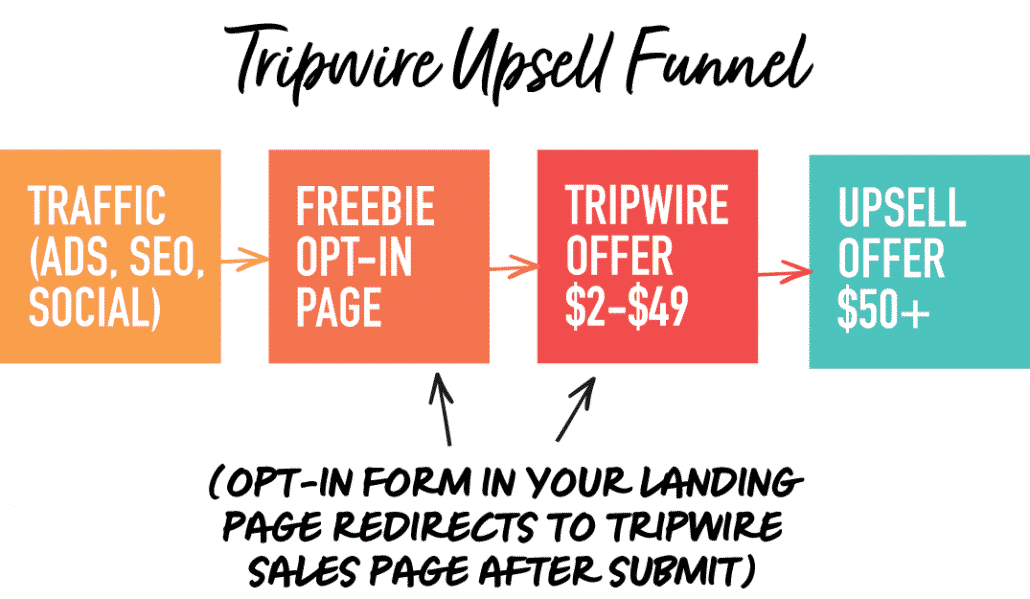
These are just two simple examples and if you’re wondering… Yes, you can totally mix and match these ideas or edit your funnels in a way that makes sense.
For example, you might drive traffic right to your tripwire page and skip the freebie landing page step. Or you might add an upsell to the “one-time offer” funnel that starts with a blog post and content upgrade. Visuals always help us but it’s really just to get you started thinking about the possibilities.
Take out a piece of paper and sketch out the path that guides your target audience to your offer and then test, test, test to see what works best!
Note: It usually takes a bit of experimenting because some top-of-funnel content (blog posts, freebies, etc.) will work better than others and you’ll want to create multiple paths for your audience to find your offer too.
Whichever way you go, it’s important to create a sense of urgency.
If it’s just a low-priced offer that they can get any old time any old where they are unlikely to take action and become a customer quickly (the goal).
To create urgency for something that really isn’t scarce (a digital product can be sold an infinite number of times), the OFFER must be scarce and/or time-sensitive.
For that, you’ll need a couple of tools to create a limited-time offer. There are all kinds of expensive funnel products out there but with a bit of creativity you can easily set this up yourself to just get started with it.
3. The Email Tripwire Offer
The other way to do this is after they’ve signed up for your email list, to make them a limited-time offer and put the countdown timer right in the email itself. For that, you’ll need something like Deadline Funnels.
Keep in mind that when people opt-in to your mailing list, they’re MOST engaged in the initial emails you send them. When you send them a welcome email, you can make them a limited, one-time exclusive offer there.
Or, you might set up a welcome sequence where you build interest for your tripwire, warm them up to the idea, maybe offer it first without a timer, and then offer a “last chance at this price” email with a timer.
There are a lot of ways to go about this and I’d experiment a bit… if one method isn’t working, try another! That’s what conversion optimization is all about: testing and tweaking until you get a certain % of people raising their hands for the offer.
Then, once you get that sorted out, it’s just a matter of getting more people to that offer. (Another story for another day!)
I hope you found this helpful! Please let me know if you have any questions in the comments. Have fun with creating your tripwire marketing funnel, and before you go be sure to grab our Digital Product Launch Blueprint to help you create your irresistible offer!



I have a question about my email funnel. Each of my blog post has a freebie attached, which also has a trip wire. My dilemma is if every time someone option into a freebie do they go to the same welcome sequence every time? I get confused on where to send my customers, mainly the ones who are already on the list and going through the welcome sequence already. Thank you in advance for your input. I love your blog and your products🥰